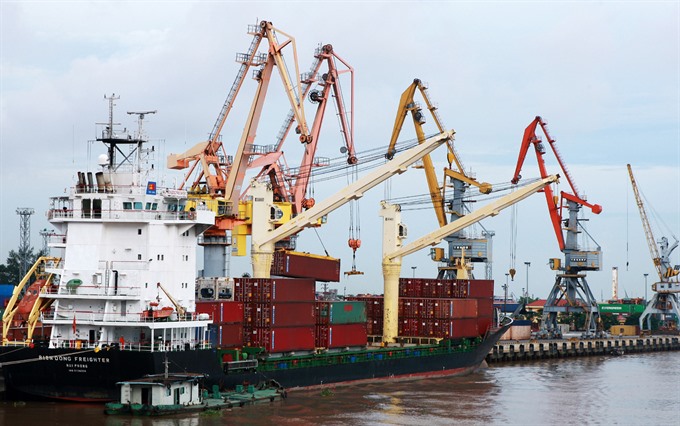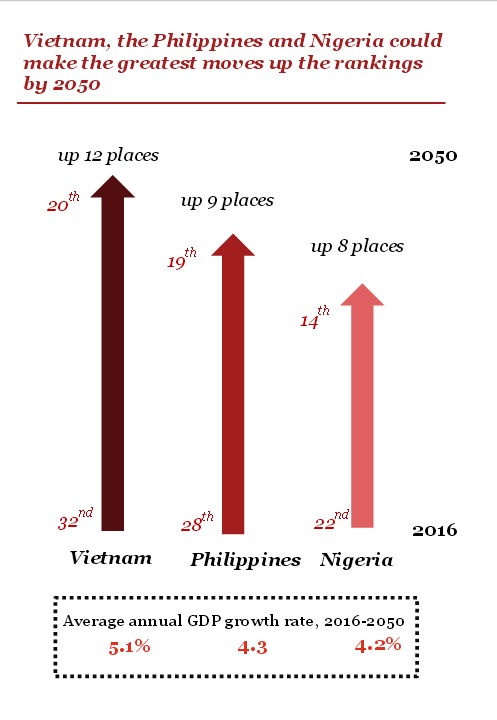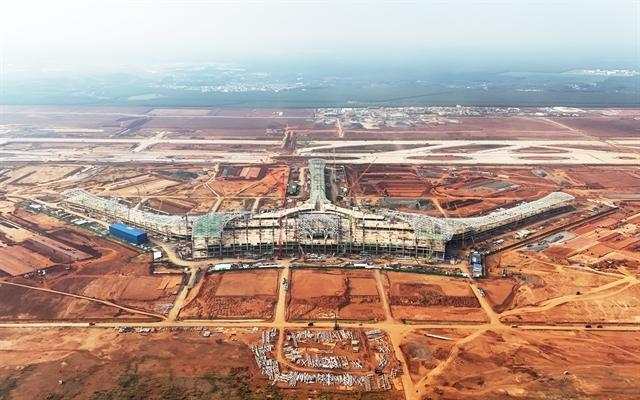 Economy
Economy

A report by the prestigious global accounting firm of PricewaterhouseCooper (PWC) predicts continued economic growth for Viet Nam until 2050 period, with annual GDP increase of 5.1 per cent, on average.
 |
| Ships entering the Hải Phòng Port. Việt Nam’s economy experienced high growth in recent years and would continue to do so until 2050, according to PWC’s latest report. — VNA/VNS Photo Lâm Khánh. |
Viet Nam NewsHÀ NỘI — A report by the prestigious global accounting firm of PricewaterhouseCooper (PWC) predicts continued economic growth for Viet Nam until 2050 period, with annual GDP increase of 5.1 per cent, on average.
The report issued yesterday, entitled “The World in 2050 - The long view: How will the global economic order change by 2050?” lists Việt Nam as the 32nd largest economy in the world, with gross domestic product (GDP) value based on purchasing power parity (PPP) at US$595 billion.
PWC anticipates the country will grow on average 5.1 per cent per annum, making it one the world’s most rapidly progressing countries.
The report predicted that by 2030, according to GDP based on PPP, Việt Nam would climb up to No. 29 in the world with GDP at $1.3 trillion, and would continue to rise until 2050 to become the 20th largest economy with GDP of $3.17 trillion.
Together with Nigeria and the Philippines, Việt Nam could make the greatest jumps in the ranking system until 2050.
However, PWC warned Việt Nam of the current volatile world situation, with major political events such as Brexit and Donald Trump’s presidency, all of which would cause crucial disruptions to the global economy until 2050.
To achieve continuous success, as an emerging economy, Việt Nam would need to enhance institutions and infrastructure significantly to realise the country’s long term growth potential and to develop on the basis of a more stable economic reconstruction, perfecting the framework and the education system to help the domestic labour force contribute to long term economic development.
The forecast by PWC for Việt Nam in 2015 was more positive. It estimated that the country would have GDP of $3.4 trillion in 2050 and a ranking of 22 on the world’s economic scale, with an annual growth rate of 5.3 per cent.
 |
| Source: PWC’s report |
India currently stands in third place and is projected to overtake the United States by 2050.
Indonesia moved up the ranking to fourth place, overtaking not just Germany and Japan, but also Brazil and Russia by 2050.
Germany and the United Kingdom held on to their positions in the top 10, but France fell to 12th place and Italy to 21st, overtaken by a succession of faster-growing emerging economies such as Việt Nam.
“Emerging economies offer great opportunities for business; the numbers in our report make it clear that failure to engage with these markets means missing out on the bulk of economic growth we expect to see in the world economy between now and 2050. To succeed, businesses will need to adopt strategies with the right mix of flexibility and patience to ride out the short term economic and political volatility that is a normal feature of emerging markets as they mature”, John Hawksworth, chief economist for PWC in the United Kingdom, commented.
The world economy could more than double in size by 2050, growing at an average annual rate of just over 2.5 per cent between 2016 and 2050, far outstripping population growth, due to continued technology driven productivity improvements. Emerging markets could grow twice as fast as advanced economies on average. As a result, six of the seven largest economies in the world were projected to be emerging economies in 2050, led by China, India and Indonesia.
Growth is expected to be driven largely by emerging market and developing countries, with economies such as Brazil, China, India and Indonesia, as well as Mexico, Russia and Turkey growing at an annual average rate of 3.5 per cent over the next 34 years, compared with an average of just 1.6 per cent for advanced nations such as the United States, Canada, France, and Germany, as well as Italy, the United Kingdom and Japan.
PWC’s report set out its latest long term global growth projections until 2050 for 32 of the world’s largest economies, accounting for some 85 per cent of global GDP. — VNS




